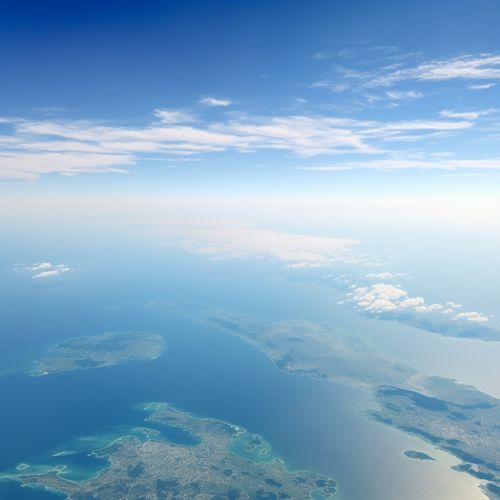East China Sea
Geography
The East China Sea is a marginal sea in the Western Pacific Ocean, part of the larger Pacific Ocean. It is bounded on the west by the Asian continent, primarily the eastern coast of China, and on the east by the Ryukyu Islands, which are part of Japan. The sea extends from the South China Sea in the south to the Yellow Sea in the north, covering an area of approximately 1.249 million square kilometers. The sea's average depth is about 350 meters, with its deepest point reaching approximately 2,716 meters.


Hydrography
The East China Sea is characterized by its complex hydrography. The sea's water is primarily influenced by the warm Kuroshio Current, also known as the Black or Japan Current, which flows northward along the sea's eastern edge. This current brings warm, tropical waters from the equator, contributing to the sea's relatively high average temperature. In contrast, the cold Limingan Current flows southward along the sea's western edge, bringing colder waters from the Yellow Sea. These two currents interact, creating a rich and diverse marine ecosystem.
Marine Ecosystem
The East China Sea is home to a diverse array of marine life, including numerous species of fish, crustaceans, and mollusks. The sea's biodiversity is largely due to its complex hydrography and the nutrient-rich waters brought by the Kuroshio and Limingan currents. The sea is particularly known for its abundant populations of fish, including species such as mackerel, sardines, and tuna. The sea also supports a significant population of endangered species, such as the Chinese white dolphin and the finless porpoise.
Economic Importance
The East China Sea plays a crucial role in the economies of the surrounding countries, particularly China, Japan, and South Korea. The sea is a major source of fish and other seafood, contributing significantly to the region's food security. In addition to fishing, the sea is also important for shipping and trade, with numerous busy shipping lanes traversing its waters. The sea also holds significant reserves of natural gas and oil, although the exploitation of these resources has been a source of contention among the bordering nations.
Political Issues
The East China Sea has been the site of numerous territorial disputes, primarily between China and Japan. The primary point of contention is the sovereignty over the Senkaku Islands, a group of uninhabited islands in the sea. Both countries claim ownership of the islands, leading to ongoing diplomatic tensions. The sea's rich natural resources, particularly its oil and gas reserves, have further exacerbated these disputes.
